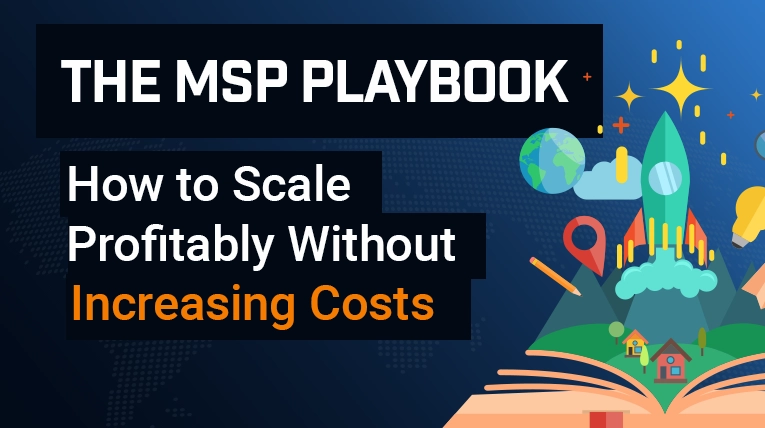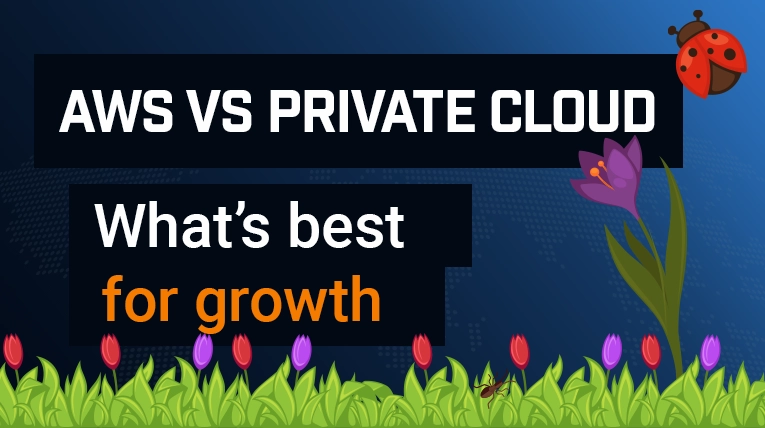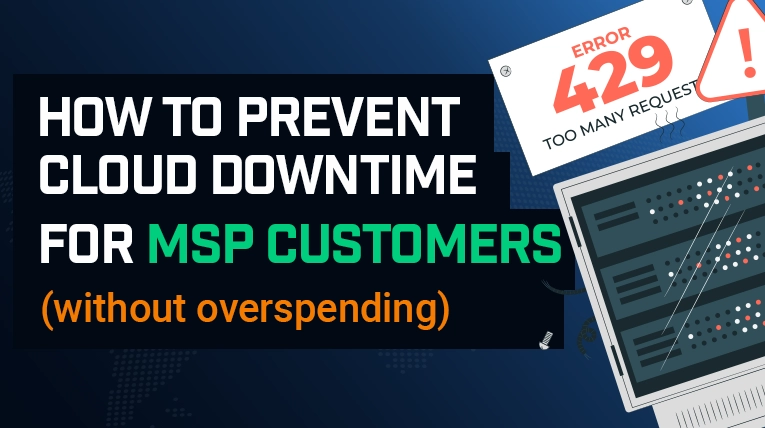Resilience vs disaster recovery: what MSPs need to know
Last Updated: May 21st, 2025 5 min read Servers Australia

How layered protection helps MSPs stay online – and bounce back fast
In managed services, uptime isn’t just a goal – it is the business. Clients don’t just rely on you for systems and support – they rely on you for continuity. If you’re down, they’re down. And if you can’t recover quickly, their business suffers – and so does your reputation.
But ask a roomful of MSPs to define "uptime", and you’ll get a dozen answers: “We’ve got backups.” “We’re in the cloud, so we’re good.” “We’ve set up auto-failover.” In truth, uptime isn’t any one of those things. It’s the outcome of two complementary strategies working together: resilience and disaster recovery.
They’re not the same – and understanding the difference is essential to protecting your clients, your margins, and your ability to scale.
Why resilience is your first defence
Resilience is your infrastructure’s ability to stay operational in the face of faults, without disruption. It’s about building a platform that can take a hit and keep running – automatically rerouting, absorbing failures, and shielding end users from impact.
It involves multiple layers of fault tolerance, including:
Redundant power and network links, to ensure a single point of failure doesn’t take down your stack
High-availability (HA) clustering, so workloads can instantly shift across nodes without manual intervention
Active-active infrastructure, spreading traffic and compute across geographically separate sites
Load balancing and real-time replication, helping workloads recover in real time, often without users noticing
With a private cloud environment optimised for high availability, these elements come baked in – giving you the tools to isolate faults before they affect client performance.
For MSPs, this isn't just infrastructure – it’s a way to scale safely. The more disruptions your platform can absorb without triggering downtime, the more clients you can serve confidently – and the fewer fire drills your engineers face.
When resilience isn’t enough – DR takes over
No infrastructure is invincible. Even the most resilient setup can be defeated by an edge case: ransomware that bypasses endpoint protection, extreme weather events, misconfigured patches that propagate across your fleet.
That’s where disaster recovery becomes your second line of defence.
Disaster recovery is more than just having a backup – it’s a structured, tested framework that ensures recovery is possible and predictable. A complete DR strategy includes:
Immutable backup storage, ensuring recovery points can’t be encrypted or deleted by threat actors
Offsite replicas, stored in geographically and logically separate environments
Clearly defined RTOs and RPOs, so you know exactly how long recovery should take, and how much data loss is tolerable
Scheduled testing, to confirm you can meet those objectives – not just in theory, but in practice
A well-implemented DRaaS solution means your MSP can shift from “we’ll get back to you” to “we’ll have you restored within 90 minutes” – a vastly different client experience.
Why you need both – not one or the other
It’s easy to assume resilience or recovery alone will suffice. But that’s where many MSPs find trouble.
Some have great DR practices but no failover – so even minor disruptions become full outages
Others have HA platforms but unmonitored backups – only to discover critical data wasn’t recoverable
Resilience buys you time. Disaster recovery buys you recovery. Together, they form a robust safety net that transforms unexpected failures into routine recoveries – protecting SLAs, reputations, and client trust.
For MSPs looking to grow into new verticals or scale multi-tenant platforms, this combined approach is essential. And with Servers Australia’s MSP-first infrastructure, it’s also achievable without rebuilding from scratch.
Design around risk, not just tech
Smart protection starts with a simple question: “If this goes down, how fast do we need it back?”
Every client workload has a different answer – and your protection model should reflect that. Here's how leading MSPs tier protection based on risk:
Mission-critical systems (e.g. payments, clinical data):
Resilience + DRaaS, fully automated and regularly testedCore business ops (e.g. CRM, email, internal platforms):
Resilient infrastructure, plus daily backup to offsite storageNon-essential tools (e.g. dev environments, staging):
DR only, with clearly communicated RTOs/RPOs
This structure simplifies pricing, improves margin control, and gives clients a risk-adjusted solution – not just a flat package. Shape
You don’t need to build it all yourself
Implementing both high-availability infrastructure and tested DR strategies in-house can be daunting – especially across multiple clients, sites, and compliance requirements.
From maintaining cross-site replication and automated failover, to managing DR documentation and running annual test restores – it quickly becomes a full-time job with limited ROI.
By partnering with Servers Australia, you offload the complexity – without giving up control. Our infrastructure gives you:
Resilient, HA-ready private cloud platforms, purpose-built for MSP workloads
Multi-site colocation options across Tier III+ data centres, with built-in network and power redundancy
Proven DRaaS solutions, backed by defined SLAs, local support, and white-labelled delivery
You keep the client relationship. We help you deliver behind the scenes, consistently and confidently.
Business continuity builds trust – and trust builds value
When things go wrong – and they will – your clients won’t ask about fibre routing or hypervisor logs. They’ll ask just one thing: “When will we be back online?”
Your ability to answer that with clarity and confidence isn’t just about technical competence – it’s what builds lasting trust. It’s what sets premium MSPs apart from those locked in a race to the bottom. And it’s what allows you to grow with certainty – knowing the foundation behind your services is resilient, recoverable, and ready for anything.
Resilience and disaster recovery aren't features. They’re fundamentals. Built into your services, they shift the conversation from firefighting to futureproofing.
See how smarter resilience and backup can set your MSP apart.
Check out our MSP-ready infrastructure solutions



